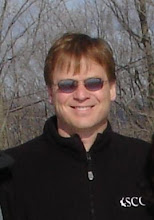As a member of the ODTUG Board of Directors and participant in the ODTUG Hyperion SIG, I can tell you many, many exciting things are happening with the upcoming KScope11 conference. I am planning a series of short blog posts to talk about each of these things.
This week, five new sessions were added to the KScope11 agenda. The conference now features over 100 Hyperion sessions and will truly be a gathering place for Hyperion experts and insiders. The new sessions are:
Commenting on Essbase Commentary Options at ConocoPhillips
Presenter: Henry Robin, ConocoPhilips
LROs, Cell Text, Related Content? Essbase provides many options for adding commentary to your reporting and analysis solutions. Join ConocoPhillips as they share how they provided an automated system for capturing and reporting variance commentary. We will discuss our current solution as well as possible future changes based on Oracle's direction for Essbase commentary. Don't miss this chance to learn more about ways to capture critical text information about your Essbase numbers!
(Planning OR Essbase) AND FDM) AND ERPi = Success!
Presenter: Anthony Scalese, Ranzal & Associates
This session will explore the capabilities of FDM, and now ERPi, to integrate with other target EPM applications such Essbase (BSO & ASO) and Strategic Finance. Out of the box features such as the ability to execute calc scripts before and after a load as well as leveraging load rules will be showcased. The session will highlight how the introduction of ERPi further expanded the already world class analysis & reporting capabilities of Essbase by adding drill through to transactional detail. This session will conclude with an overview of automation capabilities of FDM, discussion of use cases and thorough Q&A.
Essbase Custom Defined Functions are fun!
Presenter: Toufic Wakim, Oracle Corporation
This session will explore a number of interesting cases of Essbase CDFs used by Oracle customers explained by one of Oracle's most experienced Essbase CDF experts.
Using MaxL to Automate Essbase
Presenter: Natalie Delemar, Ernst & Young
What is this thing called MaxL (and why the funny capitalization)? All will be revealed through practical code samples and interactive examples that show why MaxL is an essential Essbase tool. You will see: the many ways to invoke MaxL, driving MaxL scripts via the OS shell, Essbase database manipulation with error checking, encryption, script nesting and logging.
Mission Critical! Deploying Highly Available Oracle EPM Systems
Presenter: Eric Helmer, Linium
Mission Critical implementations of the Hyperion Enterprise Performance Suite are becoming more commonplace. As corporations are turning to global integration and follow-the-sun real time analytics, Hyperion applications must accommodate thousands of users 24x7. Join Oracle ACE Director Eric Helmer as he dissects larger Hyperion implementations and strategies to achieving a global, highly available enterprise. Learn how many Fortune 500 companies achieve world class availability through clustering and failover techniques, disaster recovery procedures, load balancing, and virtual machines.
If you haven't registered for KScope11 yet, you can register at
http://www.kscope11.com/.










